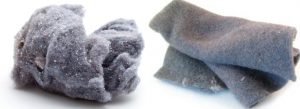Here Are Some Simple Maintenance Tips to Keep Your Tumblers Running Smoothly… and Profitably
 Lint. It barely has any weight to it. Who would have thought something so seemingly innocent could be so potentially destructive?
Lint. It barely has any weight to it. Who would have thought something so seemingly innocent could be so potentially destructive?
However, if left unchecked, lint can cause a variety of issues for your self-service laundry. As a result, if we are going to discuss dryer maintenance, we should start at the very beginning – by looking at the preventative side first, before touching on some of the service tasks that owners may need to take on.
So, let’s all agree right now that the easiest thing to do is to make sure you and your laundry attendants are doing just as all of the dryer manufacturers recommend and emptying your dryers’ lint drawers – not every few days, but every single day.
In my store, I even make a point of reaching up to the left and right to be certain there aren’t any pencils or screws rubbing on the roller bearings. Often your ears will catch that issue as well. If your cylinder is making a “thump-thump-thump” noise, it’s likely to be a roller bearing. Thankfully, that’s a relatively simple repair.
In fact, I recommend that store owners keep a few sets of roller bearings on hand for any repairs that come up. Replacing the part on a stack dryer unit is relatively easy. Reach up again with a 9/16 socket and remove the nut on the piece, and place it in the drum. Next, simply lift up slightly on the drum and remove the old roller. You also will want to feel around and remove any extra lint that may be lingering in that area, before lifting on the drum again and sliding the new bearing into place, and tightening the nut. One tip I can offer is that sometimes you can turn the bearing 180 degrees and get a little extra life out of that piece.
I’m also asked frequently if it makes sense to replace the other bearing at the same time. The answer is no. The repair isn’t difficult or terribly time consuming, so stick to replacing only the worn-out pieces that truly need to be swapped out, unless you determine the other one is nearing the end of its life as well.
When it comes to performing this repair on a single-pocket dryer, the procedure is pretty much the same; however, it will require removing the front plate to get at the rollers.
While doing a repair on a dryer, it’s always a good idea to check other areas as well. If you have a coin drop, run a coin through to make sure that it is feeding properly. Again, that nasty lint can find its way into the mechanism and impede the coin’s progress. In most cases, this cannot be blown out – it very likely will need to be pulled out. And that will involve removing the coin mechanism.
Again, it’s critical to listen to your dryer units. If a tumbler is making a weird buzzing noise, likely there is (or was) a very wet load placed into that pocket, which caused moisture to build up on the fan blades and collect lint. If you don’t take care of this particular issue, the fan will continue to run out of balance and eventually just disintegrate, most likely taking the thermistor with it.
Fortunately, this also is an equally quick fix that involves removing only a couple of screws around the fan and using a putty knife to scrape off the lint from the fan blades.
Truth be told, most of the maintenance issues that arise on the drying side are the result of not staying on top of lint buildup. As I mentioned at the outset, you and yours staff must be diligent about cleaning out lint drawers daily. Some well-run, high-volume laundries are emptying those drawers several times a day – which, in my opinion, is never a bad idea for any size store in any market. As we all can attest to, laundry equipment is an investment. And, when that investment is not running, it’s not paying a dividend. Therefore, vended laundry owners must stay on top of the minor maintenance and housekeeping issues in order to better safeguard against the extended downtime and expense that more major repairs bring.











